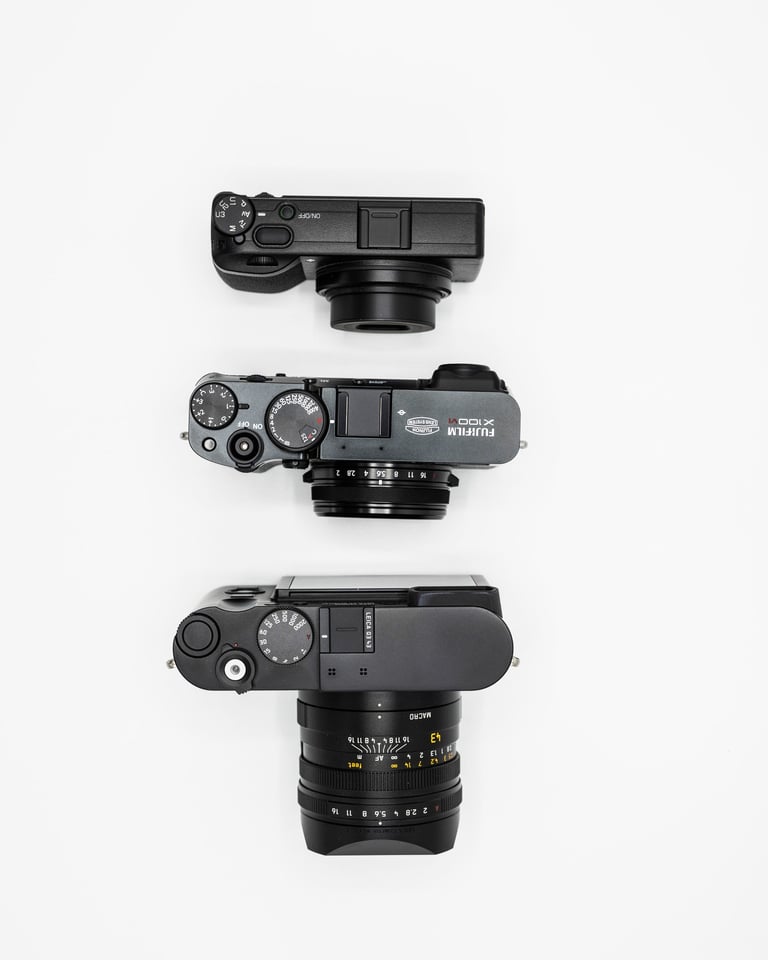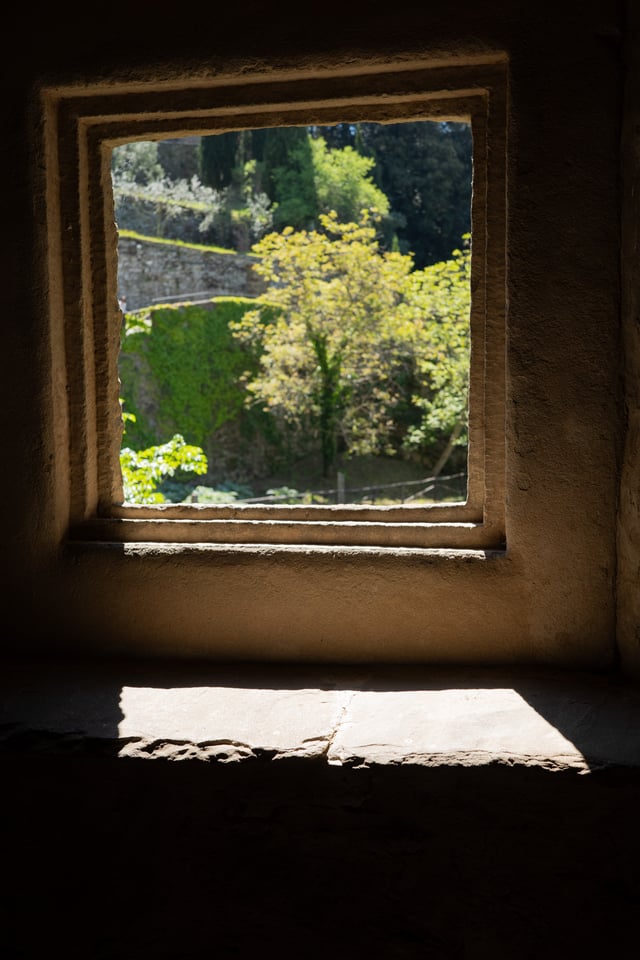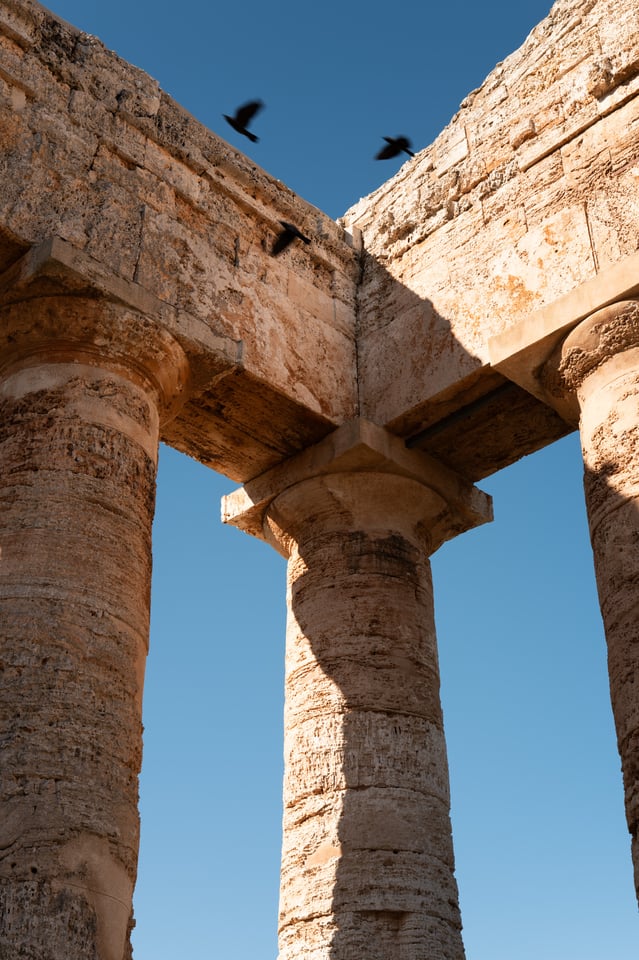Here on Photography Life, when we talk about cameras, it’s usually in reference to interchangeable lens cameras. There are many reasons for this, but probably the most important is that interchangeable lens systems have so much versatility and are usually of a higher quality. However, I have long been intrigued by the idea of a fixed lens “point-and-shoot” type camera that I could use for more casual photography.
One problem I’ve had with fixed-lens cameras in the past is that they are a little too wide for my taste. Most of them have focal lengths around a 28mm equivalent, whereas I prefer something in the 40mm or 50mm range. However, both Leica and Ricoh recently released fixed-lens cameras with longer focal lengths: the Leica Q3 43 with a 43mm lens, and the Ricoh GR IIIX with a 40mm equivalent lens. Meanwhile, the ever-popular Fuji X100VI’s lens has a 35mm equivalent focal length, which is slightly wider than I prefer, but still compelling.
Recently, I had an opportunity to borrow all three of these cameras and put them through their paces side by side. Which would be the best for my purposes, and would any of them beat my current walk-around setup – a Nikon Z6 II with the Z 40mm f/2?
First, lets take a look at the three cameras I would be comparing, plus the Nikon Z6 II and 40mm f/2 for reference:


Basic Specs
| Ricoh GR IIIX | Fujifilm X100VI | Leica Q3 43 | |
|---|---|---|---|
| Announced | September 2021 | February 2024 | September 2024 |
| Sensor | 24 MP APS-C | 40 MP APS-C | 62 MP Full Frame |
| Lens | 26mm f/2 (40mm equivalent) | 23mm f/2.8 (36mm equivalent) | 43mm f/2 |
| Weight | 262 g | 521 g | 772 g |
| Price | $1127 | $1600 | $7380 |
Although all three are fixed lens cameras, as you can see, there are some significant differences! The Ricoh is the smallest, lightest, and least expensive, while the Leica is the largest, heaviest, and by far the most expensive. The Fuji slots in the middle.
While it might seem unfair to make this comparison given how much more expensive the Leica is, I thought it would be interesting to see what the most expensive camera in this category can do, and what the tradeoffs might be with the other cameras. Also, since I’m looking for a travel and walkaround camera, the size and weight of the Leica actually means it starts with a disadvantage in my book.
One disclaimer – this is not a review of these three cameras, and I am not going to go over every feature of them. Instead, this was a field test and side by side comparison. I will point out the differences and features that most struck me in either a positive or negative way, but of course everyone’s use cases are different.
My Experience With Each Camera
1. Ricoh GR IIIX
Wow is this camera small and light! It’s been a long time since I used a camera this small. It is truly pocketable, which I very strongly appreciate for my requirements.
The biggest tradeoff on the size of this camera is the lack of a viewfinder, but in practice, it bothered me less than I expected. And optically, there was nothing that disappointed me. Particularly at ISO 1600 and below, the image quality is quite good. The lens is sharp, and it controls flare better than the Fuji.
Although the camera is not weather sealed, I did not encounter any issues, including in humid, rainy conditions. I likely would be more cautious with this camera in heavy rain and sandy conditions than the others on this list, but that’s a tradeoff I’d be ok with for the size/weight/price combination.

The build quality is decent, and about what I expected. Plastic is heavily used, but the controls are all easy to use and accessible. The lens retracts when the camera is off, which further aids the ability to pocket this camera.
For me, one big surprise with the Ricoh is that it actually has a small amount of internal storage (2GB). While this doesn’t completely solve for the single card slot issue that all of these cameras have (more on that later), it is great for peace of mind if you forget a memory card. And if it fills and you don’t have a spare, you can keep shooting for a while.

The battery in this camera is unsurprisingly small, but in practice, I didn’t find the battery life to be a big issue. It significantly outperformed the rated 200 shots. However, I would bring a spare if you’re planning to shoot all day.
Autofocus is ok – the GR IIIX has the same internals as the GR III, which came out in 2019, so the system is about 6 years old at this point. It’s certainly not going to win any speed awards, but for everyday photography and travel, it was adequate in my testing. It’s also worth mentioning that Ricoh just recently announced that the GR IV would be coming out later this year, which should improve the autofocus. But so far, there is no mention of a GR IV X, so if you want the 40mm equivalent focal length, the GR IIIX may remain the option for a while.
The biggest downside to this camera for me is the inability to manually focus. The camera has a “snap focus” system where you can pre-set a distance and have the camera instantly focus there and take a photo, which I found very useful for some subjects, but I would still prefer the ability to actually focus manually in scenes that call for it.

One last surprising thing about the Ricoh compared to the other two – because it is so much smaller, I expected it to be harder to grip and use one-handed. In practice, I found the opposite to be true. The Ricoh’s grip has a great texture to it, and is actually much easier to hold onto than either of the other two cameras. Everyone’s hands are different of course, but this was the easiest for me to use one handed. It was also the only camera I was comfortable with using without a strap.
In all, I really enjoyed using the Ricoh. Its size and weight were so transformative that it changed when I brought a camera with me, and found myself carrying it when I typically wouldn’t have brought a camera along. This allowed me to capture photos I otherwise would have missed.

2. Fujifilm X100VI
This is probably one of the most polarizing cameras out there. People who love Fuji in general, and the X100 series in particular, seem to be passionate supporters that most camera brands would be envious of. On the other hand, people who don’t like or use these cameras tend to think of them cameras as overrated and gimmicky. So, which camp did I fall in after using it?

Well, it was a bit of a mixed bag for me. On the plus side, I feel like this camera finds a bit of a sweet spot between size and function. It is substantially larger and heavier than the Ricoh, but for that extra size and weight, you get a viewfinder, a lens that can be manually focused, a shutter speed dial, and aperture controls on the lens. As someone who has used a lot of film cameras, these controls are intuitive.
On the minus side, the build quality doesn’t feel like a significant increase over the Ricoh, despite being almost 50% more expensive. The image quality is reasonable but not particularly impressive – it didn’t strike me as better than the Ricoh in practice, even though the resolution is higher. The autofocus feels a few steps behind most modern cameras. And it has a shutter button that I can only describe as “mushy.”

This camera also has a really unusual viewfinder (some other Fuji cameras also have it). It is a hybrid optical/electronic viewfinder, which allows you to use the camera in either mode, or as an optical viewfinder with a digital overlay. It’s an interesting design, and maybe the variety of options gives it a wider appeal for everyone. But in practice, I found the viewfinder to be decent at best. The optical viewfinder is probably the best of the options if you like that style. The hybrid viewfinder felt very distracting to me, and the digital has a really narrow viewing angle.

One of the biggest upgrades to the X100VI over the previous version is the addition of IBIS. I’m glad they added this, especially since both the Leica and the Ricoh both also have it. The IBIS works well and complements the X100VI’s nature as a handheld tool.
As a side note – many people who use this camera shoot in JPEG and use Fuji’s famous film simulations. I played around with this somewhat, but since I shoot RAW, this ability is not something I particularly care about and didn’t impact how I would rank these cameras. I understand that for some, this feature is a defining one, and may be almost enough to justify buying the X100VI by itself.
All in all, using the Fuji was an interesting experience. Given the size and controls, I could see where for some use cases, this might be the only camera you need (I don’t feel that way about the Ricoh). On the other hand, the camera didn’t grab me or make me want to go out and create, which was the whole point of this experiment.
3. Leica Q3 43
On opening the box, my immediate thought with the Leica Q3 43 was, “Wow, this is a pretty camera.” Most digital cameras look fairly similar and utilitarian, while this one looks premium and attractive. Then I picked it up and thought, “Wow, this is a heavy camera!”
To be sure, the Q3 43 is both beautiful and heavy – nearly triple the weight of the Ricoh and about 50% more than the Fuji. It is also the only one of the three that isn’t pocketable in a practical way, as the lens is significantly larger. It feels more at home in a small bag than in a pocket.

Using this camera is a joy (when you can hold onto it, described below). The dials, controls, image quality, build quality, and shooting experience are all great. This is a camera that makes me want to go out and do more photography, which is exciting since the point of a camera like this for me is to be fun and make me want to create. As mentioned, it is not pocketable, so you would need to commit to either wearing it around your neck or carrying a bag of some kind. For some, this would not be a big deal, but for others it is.
I mentioned that image quality is great, but I want to take a moment to expand on that – this camera puts out some of the nicest and best looking files I’ve ever seen. The combination of the 43mm Leica lens and the 62 megapixel sensor is fantastic. Although you certainly pay for it in size and cost, it does lead to photos with beautiful image quality.

Another interesting thing about this camera is that it attracted much more attention than the other two. This could be a good or bad thing, depending on the situation. Leica is a well known premium brand, and many people interested in photography approached me striking up conversations, which can be a lot of fun. On the other hand, it could also attract the wrong type of attention. (I did not experience this, but certainly some people have.)
Of course, there is no way to talk about this camera without talking about the price. At $7,380, you could buy 6 Ricohs or 4 Fujis and still have hundreds of dollars left over. You could even buy a Nikon Z8 with a full suit of lenses, and it would probably be cheaper – and far more practical. Most people will never buy the Leica Q3 43, and that is ok. This is not a camera that “makes sense” – rather, it is a camera to enjoy for people who are interested and can afford it.

Besides price and size, there are two major problems with the Q3 43 for me. The first is that it only has one SD card slot. Although this is also true about the other cameras on this list, it bothers me more in a camera of this price. The Leica Q3 43 is a camera that I would consider using for events and weddings (I typically have a 50mm or 40mm on my second camera body, so this would slot in there nicely), but not having the second card slot is a dealbreaker for these types of situations.
The second problem is how hard this camera is to hold onto. This is because not only does the Leica Q3 43 not have a dedicated grip – the camera can be described as “soap-bar” shaped – but also because it’s the heaviest of these three cameras. That’s a combination that can lead to dropping the camera if you aren’t careful. Most people I know who use this camera have bought a thumb grip and always use it on a strap.
At over $7,000, I would expect the ergonomics out of the box to be excellent. This feels like a form over function decision, because the lens is so large you could easily make a larger, more comfortable grip without the overall footprint or portability of the camera getting worse. But that’s not the Leica way.

That said, I very much enjoyed using the Leica Q3 43. It absolutely feels premium, has wonderful image quality, and is a conversation starter. However, the price and a few key cons limit what could otherwise be an outstanding camera.

Sample Photos
Below is a similar shot with all three cameras.



And a sample between just the Leica and the Ricoh:


Rankings
Rather than giving an outright winner, I thought I’d summarize through the most important factors I would have in shopping for a point and shoot camera.
- Image Quality: Leica. But Ricoh gets an honorable mention because the image quality is on par with the Fuji for less money.
- Build Quality: Leica
- Autofocus: Leica
- Handling: Leica for premium feel, Ricoh for being the only one that can reliably be handheld without a strap or grip
- Shooting Experience: Leica
- Screen/Viewfinder: Fuji – it gets bonus points for its unique hybrid viewfinder
- Size/Weight: Ricoh (obviously) – I would describe the Ricoh as truly pocketable, the Fuji as “jacket” pocketable, and the Leica as not pocketable unless you have very large hoodie pockets
- Memory: Ricoh – all three cameras have a single SD card slot, which is not ideal, but the Ricoh has the added benefit of a small amount of internal storage
- Best Value: Ricoh
The Bottom Line
I see why all three of these cameras are made. The Ricoh is an almost shockingly capable camera in a truly pocketable form factor. The Fuji is a good middle ground, giving some nice improvements over the Ricoh (like a viewfinder), while still being fairly small and modestly more expensive. The Leica has some of the best image quality I’ve seen on any camera, although it comes at a significant cost, both in dollars and in size/weight.
While I enjoyed my time experimenting with all three of these cameras, the one that impressed me the most by far was the Ricoh. It is so small and light that I can take it with me even when I don’t have space for a camera, and it takes surprisingly good photos. It also has the benefit of being the most different from my daily Nikon Z setup.
Ultimately, though, I think I will keep my Z6 II and 40mm combo as my walk-around kit, at least for now. I didn’t particularly enjoy the Fuji and wouldn’t spend the money for the Leica. And while the Ricoh did impress me, I’m not sure if the size benefit outweighs the extra expense and needing a separate workflow for another camera. That being said, if I am in a situation where bringing a super small camera would be necessary, I would absolutely pick up the Ricoh. It is far more enjoyable to use than a phone, and a similar size.

I hope that you found this comparison interesting. Let me know if you have any thoughts on these cameras or questions below!
One thing to consider for travel and events is the number of locations and shows that enforce a policy of no “professional cameras” based solely on the criteria of interchangeable lenses. Any of these fixed-lens cameras would be allowed where the Z6ii would be turned away.
I look at those pictures and truly am unable to tell which came out of which camera.
I think you bring up a really good point that Spencer and I often talk about – almost any modern camera can take perfectly good pictures for most use cases – it’s more about what gets you out doing photography!
Any interest in the newly announced RX1R III? At “only” $5100 maybe it’s worth considering over the Leica, if 35mm isn’t too wide for you. And it weighs even less than the Fuji X100VI.
That could definitely be an interesting addition to compare!